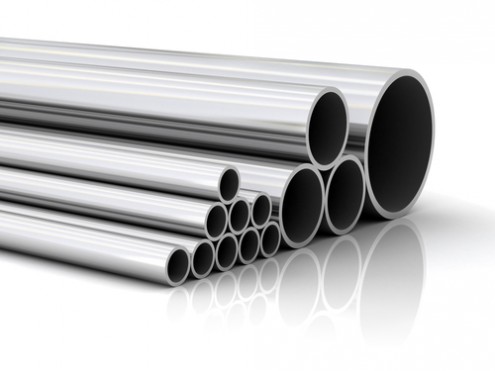Special report: How much longer will society depend on steel?

More than a century ago, steel replaced iron as the world’s most popular metal (or “alloy” for you technophiles). The reason: Steel is incredibly strong, useful—and thanks to innovators such as Henry Bessemer and Andrew Carnegie—it’s cheaply made.
Better living through metallurgy. But generations after steel’s commoditization, might there be a superior replacement material?
Of course, says metal expert Dr. Craig Jerner. “Steel has to fight for market constantly,” Jerner says. “We don’t build the 757 I flew in today from steel. New materials, including aluminum, nanotechnology products, and fiber-reinforced plastics, all eat into steel’s market share.”
Given the massive influence of steel in our lives, however, it will take more than a few specialized materials to usurp steel as king of the mountain. With 1.3 billion tons produced annually, steel continues to be a major component in buildings, infrastructure, tools, sea craft, cutlery (including razors), automobiles, machinery, appliances, weapons and anything that requires cogs or springs.
In other words, steel is used in a lot of things, due to its versatility. Which makes it difficult (if not impossible) to replace across the board, says Jerner. Particularly in the short-term. “I don’t see anything replacing steel within the next 10 years.”
That’s not to say steel isn’t being replaced in certain sectors, like the aforementioned influence of aluminum in aerospace. Or the lack of steel in digital electronics, the majority of which since the ‘80s have been made using high-density plastics. So steel isn’t being immediately replaced, but new materials are “creeping” on its territory, says Jerner.
Nevertheless, the strength, affordability, and multifaceted nature of steel continue to make it an attractive industrial option, despite the existence of high tech plastics and superior alloys. “Light weight metals such as titanium have great strength-to-weight ratio,” admits Dr. Jerner, “but the cost is far above that of steel.”
Which explains why your aluminum Macbook costs a lot more than alternative laptops. And partly why it’s a lot more expensive to fly an aluminum-made plane than float on a steel ship.
Despite its practical advantages, the biggest weakness with steel is its weight. For years, the military has searched for lighter alternatives to steel armor. And as we become an increasingly mobile society, we naturally gravitate towards lightweight plastics which are easier to carry.
Manufacturing efficiencies rarely happen overnight, though, especially in mass market applications. “Most new materials are developed for space and military, and thus take time to trickle down,” says Jerner.
The same was true of Henry Bessemer. While attempting to improve the construction of guns in the 1850s, he discovered an inexpensive way to produce steel. But it wasn’t until Andrew Carnegie’s wide scale application several decades later that steel overtook the world, with Pittsburgh at the epicenter.
Will there ever be a new Pittsburgh then? And will it take several decades before fiber-reinforced plastics and nanotechnology overtake steel, as steel did wrought iron at the turn of the 20th century?
“Can’t think out that far,” says Jerner. “Undoubtedly new materials will be developed that help reduce energy consumption,” he adds, “And maybe those will become the wave of the future. But it’s difficult to imagine a world without steel.”
Indeed it is. Especially after all it’s done for us.
About the author: Blake Snow is a freelance journalist and media consultant. He covers male-interest topics including technology, sports, and video games for consumer outlets like Wired, NBC, Fox, CNN, and WSJ and helps commercial clients reach prospective buyers with great storytelling.
